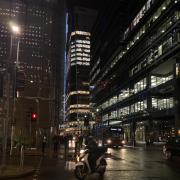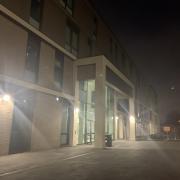
30% of TfL’s staff are sick or self-isolating. 40 underground stations have closed. Public transport is an efficient environment for the coronavirus to spread, but public awareness of this fact as well as the lockdown mean that it has rightly been used less. Amid the government’s guidance to stay at home unless absolutely necessary, how have public transport providers fared?
In terms of revenue, the pandemic has obviously resulted in huge losses for all which are forecast to be even greater in the future. According to an article published on the 16th of March by the International Railway Journal, TfL has said that they could lose up to £500 million, but Moody’s, a credit rating agency, predicted a 40% reduction in revenue if the use of the tube fell 30%. In reality, the use of the tube has fallen 96% and the use of buses has fallen 83% as of March 28. Sadiq Khan has abandoned the fare freeze promise for his re-election campaign for next year, which was meant to happen this year but was postponed. His Conservative challenger, Shaun Bailey, has committed to increasing fares by inflation plus one percent a year if he was elected. However, they are likely to survive the pandemic as they have to maintain a cash balance of £1.2 billion plus a further £600 million for liquidity and risks; meaning they can cover debts that arise during this period. Furthermore, since they are a government body, they are able to receive government support should it be necessary.
The reduced number of passengers also present a problem of ghost trains. There are 70% fewer passengers on trains now, but under a normal franchising agreement train operating companies have to run their services or be fined for a breach of contract. This has been suspended for at least six months so that the train operators can transfer “all revenue and cost risk” to the government. This ensures that there is still a service for key workers, while the effect of the lack of passengers leading to inefficiency and more damage to the environment than necessary is mitigated as the government can reduce the service to what is appropriate at the current time without having to pay a fine. Transport for London have closed 40 tube stations, stopped the night tube and reduced bus and tube service in response to reduced passenger numbers. However, this means that the trains that do run are more crowded than they otherwise would be, posing a danger of spreading the virus. Tube drivers have reportedly been “furious” at the number of people using the tube during rush hour leading to congested carriages.
Other changes that have been made to transport in response to the virus include the suspension of road charges to help key workers get to their destinations quicker and giving NHS workers a code which makes cycle journeys under 30 minutes free. TfL and Crossrail construction has also been paused to reduce the number of construction workers who need to travel into and out of London.
At the end of the day, saving lives is more important than anything else at this moment in time. It is an ever changing situation, but for now the best thing to do would be to adhere to the government’s advice: stay at home, protect the NHS and save lives.
By Adam Shamsul, Whitgift School


























